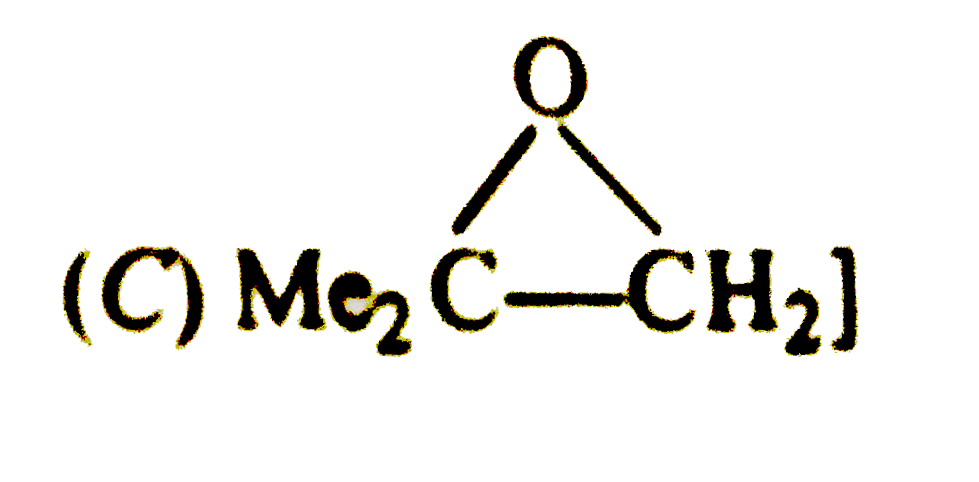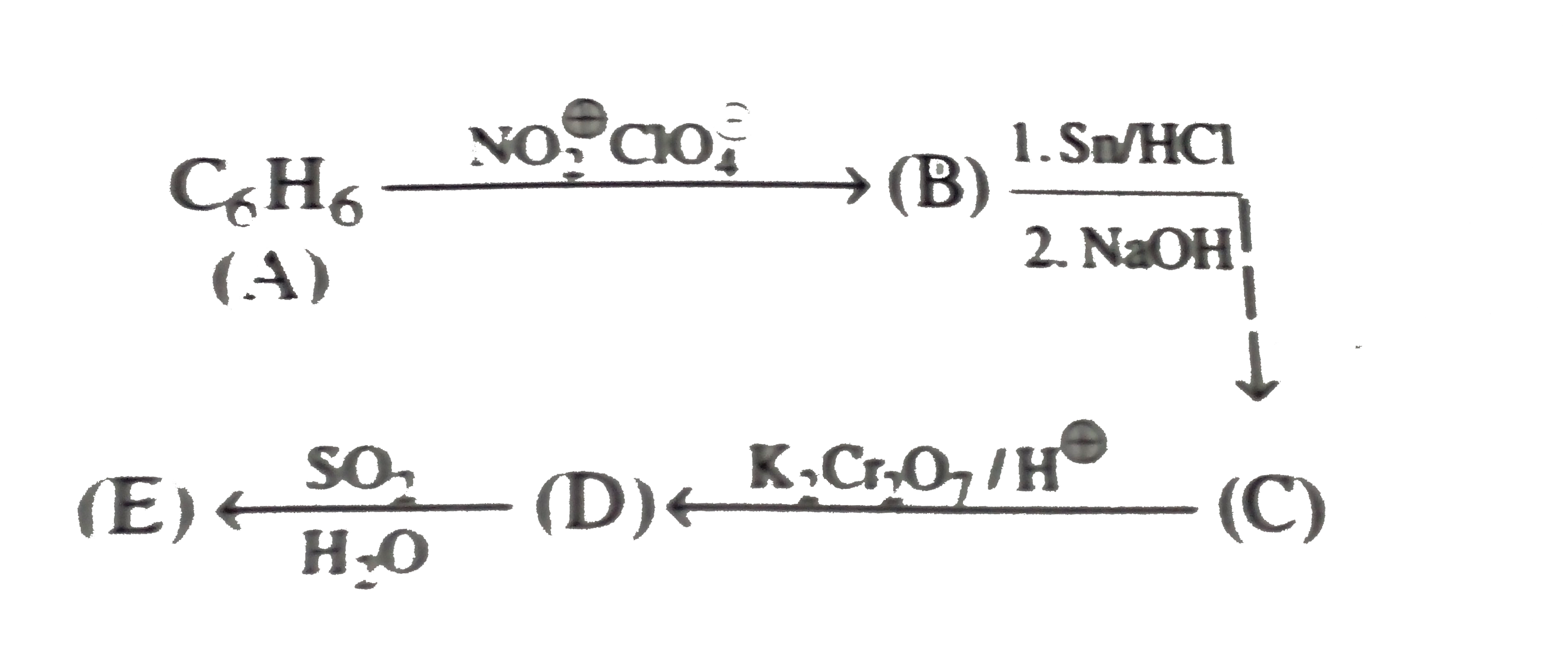C2H2Hg(OH)21%−−−−−−−−−−→H2SO4A[O]−−→B, B is :
An acid
An aldehyde
A ketone
Ethanol
The correct Answer is:A
To solve the given question step by step, we will analyze the reaction of acetylene (C₂H₂) with mercuric hydroxide (Hg(OH)₂) in the presence of sulfuric acid (H₂SO₄), followed by oxidation.
Step 1: Identify the Reactants
The reactants given are:
- Acetylene (C₂H₂)
- Mercuric hydroxide (Hg(OH)₂) - 1%
- Sulfuric acid (H₂SO₄)
Step 2: Reaction of Acetylene with Hg(OH)₂ and H₂SO₄
When acetylene (C₂H₂) reacts with mercuric hydroxide and sulfuric acid, it undergoes hydration to form an intermediate product. The reaction can be represented as follows:
C2H2+Hg(OH)2+H2SO4→C2H5OH
However, this intermediate product (vinyl alcohol, CH₂=CHOH) is unstable and will dehydrate to form an aldehyde. The dehydration leads to the formation of:
C2H5OH→CH3CHO
Thus, product A is acetaldehyde (CH₃CHO).
Step 3: Oxidation of Product A
Next, we oxidize product A (acetaldehyde) using an oxidizing agent (represented as (O)). The oxidation of acetaldehyde leads to the formation of acetic acid (CH₃COOH):
CH3CHO+(O)→CH3COOH
Thus, product B is acetic acid (CH₃COOH).
Final Products
- Product A: Acetaldehyde (CH₃CHO)
- Product B: Acetic acid (CH₃COOH)
Conclusion
The final answer is that product B is acetic acid (CH₃COOH).
---
The reactants given are:
- Acetylene (C₂H₂)
- Mercuric hydroxide (Hg(OH)₂) - 1%
- Sulfuric acid (H₂SO₄)
When acetylene (C₂H₂) reacts with mercuric hydroxide and sulfuric acid, it undergoes hydration to form an intermediate product. The reaction can be represented as follows:
Next, we oxidize product A (acetaldehyde) using an oxidizing agent (represented as (O)). The oxidation of acetaldehyde leads to the formation of acetic acid (CH₃COOH):
- Product A: Acetaldehyde (CH₃CHO)
- Product B: Acetic acid (CH₃COOH)
The final answer is that product B is acetic acid (CH₃COOH).
Similar Questions
Knowledge Check
Supply structural formulae for missing compounds.
(i) H2C=CH2+(A)→ClCH2−CH2OHH2SO4−−−−−−→413K(B)alc. KOH−−−−−−−→Δ(C)
(ii) CH3CHBrCH3alc. KOH−−−−→(A)HBr−−−−−→Peroxide(B)CH3ONa−−−−−→(C)
(iii) Me3CBralc. KOH−−−−→(A)HOCl−−−→(B)NaOH−−−→(C)
 AABCCH3CH=CH2CH3CH(Br)CH2BrCH3CH(OH)CH3BABCCH3CH=CH2CH3CH2CH2BrCH3CH2OCH2CH2CABCCH2CH=CH3CH3CH(Br)CH3CH3CH2OCH2CH2DABCCH2CH=CH3CH3CH2CH2BrCH2CH2CH2OCH3
AABCCH3CH=CH2CH3CH(Br)CH2BrCH3CH(OH)CH3BABCCH3CH=CH2CH3CH2CH2BrCH3CH2OCH2CH2CABCCH2CH=CH3CH3CH(Br)CH3CH3CH2OCH2CH2DABCCH2CH=CH3CH3CH2CH2BrCH2CH2CH2OCH3
complete the following reactions:
a. C6H6+MeCOCIBenze≠(A) AICI3−−−→ B HNO3––––––H(2)SO4)→ C NaBH4−−−−→ D H2SO4−−−→Δ E
View SolutionHNO3/H2SO4−−−−−−−−→ANaOH−−−−−→433KB, B is

View SolutionConsider the following reaction sequence,
CH3C≡CHaq.H2SO4−−−−−→HgSO4APCl5−−→HeatB
The products (A) and (B) are, respectively,
View Solution_S01_475_Q01.png) Conc.H2SO4−−−−−−−→(A)
Conc.H2SO4−−−−−−−→(A)
View SolutionPhenol (i) NaOH−−−−→(ii) CO2(A)H+/H2O−−−−−→(B)Ac2O−−→(C)
In this reaction , identify the incorrect statement?
View SolutionIdentify the following compounds :
i. C6H6(A) 2H2SO4−−−−→ (B) 1.NaOH,540K−−−−−−−−−→2.HCI (C)
ii.
View SolutionIdentify (Z) in the series.
C3H7OHconc.H2SO4−−−−−−−−−→443K(X)Br2−−→(Y)Excess of −−−−−−−−→alc. KOH(Z)
View Solution